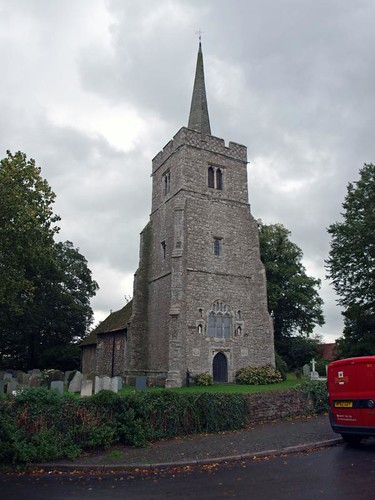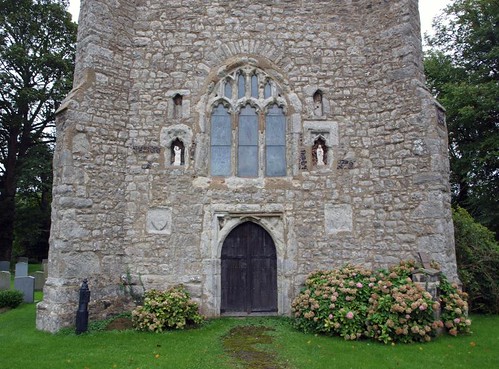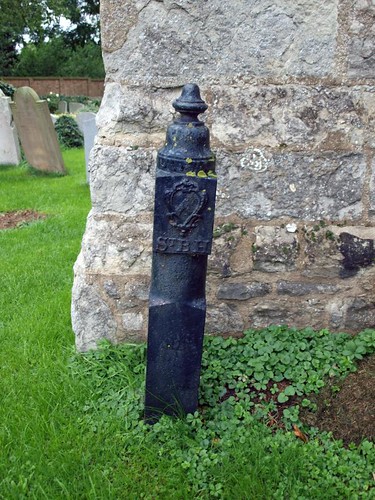Sep 2021 it has now been declared redundant and there are plans to repurpose it as a community hub.
ST MARY THE VIRGIN. The proud W tower was contributed by Bishop Wakering of Norwich (1416-25). It has big diagonal buttresses, a W doorway with the arms of the Bishop and the Countess of Stafford, a three-light window with panel tracery, niches to the l. and r., battlements with stone and flint chequer-work, and a rather tall recessed spire. Nave and chancel are much earlier, see their tiny Norman N windows. Inside, in the nave N wall a fine early C13 recess with one order of colonnettes and an arch with a keeled roll-moulding. The rood-stair doorways and the stairs themselves are preserved. - PLATE. Cup of 1566.
ST MARY THE VIRGIN. The proud W tower was contributed by Bishop Wakering of Norwich (1416-25). It has big diagonal buttresses, a W doorway with the arms of the Bishop and the Countess of Stafford, a three-light window with panel tracery, niches to the l. and r., battlements with stone and flint chequer-work, and a rather tall recessed spire. Nave and chancel are much earlier, see their tiny Norman N windows. Inside, in the nave N wall a fine early C13 recess with one order of colonnettes and an arch with a keeled roll-moulding. The rood-stair doorways and the stairs themselves are preserved. - PLATE. Cup of 1566.
LITTLE WAKERING. Its church has a surprise indeed, for in it is a pillory, brought in from its old place on the churchyard wall. The village has a row of cottages 300 years old, with neat dormer windows; the hall is 15th century. Facing the old cottages is the church, restored by John Wakering, Bishop of Norwich, about the time of Agincourt. His crest of a pelican preening his feathers is carved on a white stone on the tower. Here was a church long before the bishop’s day, for there is a small Norman window in the chancel, with traces of painting on its splays, and a handsome tomb recess as old as Magna Carta.



No comments:
Post a Comment